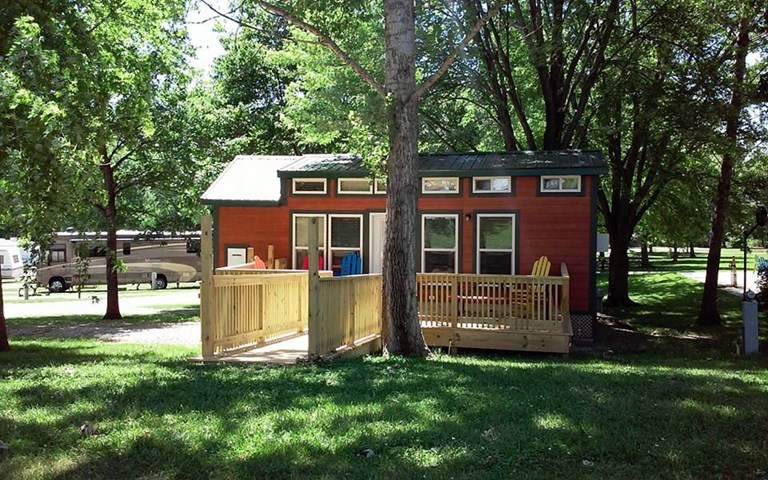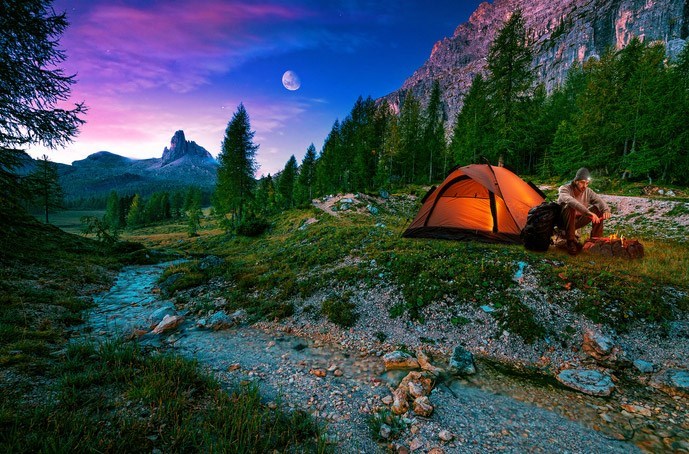Your cart is empty!
Make checkout easy by booking all your reservations at once. Add your sites from different campgrounds into your shopping cart* and then choose checkout.


Reposted from the KOA blog:
Camping is often thought of as a group activity. Campfire sing-alongs, s’mores cook-offs, and other group activities enjoyed while camping generally take more than one person. However, solo camping offers an opportunity that group camping does not. Needing to rely on only yourself out in the woods (or at your favorite KOA) adds an entirely new dimension to camping. It might seem a little daunting to accomplish at first, but the new confidence you will gain upon a successful trip will be almost unbelievable. Follow these not-so-ordinary tips and you’ll be well on your way to solo camping success.
If you are planning your very first solo camping trip, don’t get too ambitious right off the bat. A campground near where you live that has campsites not far from the parking lot is a good place to start– there’s plenty of time to tackle Glacier National Park later. Your first few solo camping trips should be focused on improving your skills. Being able to confidently start a fire, pitch a tent, and perform other camping duties is essential before you start venturing further into the wilderness alone.
Solo camping is an activity that many people wouldn’t even consider trying these days. It won’t always be easy or simple, but the satisfaction of being able to take care of yourself for a few nights in the woods is hard to match. You will learn a great deal about yourself as you reflect in the silence that nature provides. Remember to stay present in the moment while solo camping. It is a chance for you to reconnect with nature and the outdoors and recharge your batteries (and I don’t mean the batteries in your phone!).
If you plan to hike or explore the area around your campsite while solo camping, make sure to not take any unnecessary risks. An injury as simple as a sprained ankle will be something that you simply won’t want to deal with. Remind yourself to move more slowly through the environment. Not only will that minimize your risk of injury, but it will also allow you to really appreciate the beauty of nature.
Solo camping will also provide you with a lot of free time. However, don’t spend that time with any electronic device that you enjoy. Instead, bring that book you have been meaning to read or a journal to write down some thoughts. A bird guide and set of binoculars are also a great (and interactive) way to pass the time.
Another good thing about solo camping is that your tent options are a lot more flexible. You don’t really have to worry about space when you are camping alone, which means that you don’t have to pitch a big, complicated tent or transport it to your campsite. Consider using a hammock as your tent. There are a lot of great tent and hammock hybrid systems out there that add yet another unique twist on your normal group camping experience.
While not filled with a lot of conventional tips (there are hundreds of articles out there on more practical tips), this solo camping guide focuses on the stuff that can get lost in the shuffle while planning an outdoor adventure. In parting, remember that the more time you spend in the woods alone, the more comfortable you will become.
That doesn't mean this area has to always be empty. When you start reviewing camping options, your history will display here to help compare sites and find the best stay. You will be able to share your stay information with friends or family and save it for a later time if you have a KOA Account.
Make checkout easy by booking all your reservations at once. Add your sites from different campgrounds into your shopping cart* and then choose checkout.